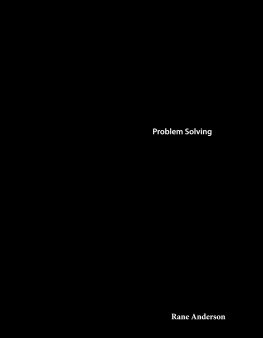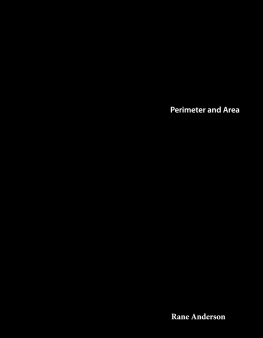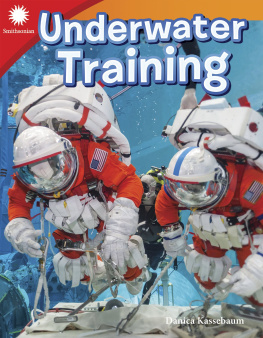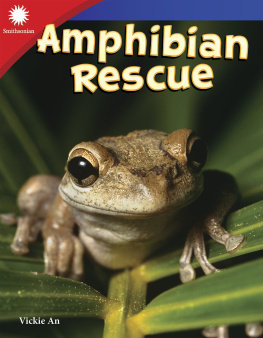Rane Anderson - Taking Photos from Space
Here you can read online Rane Anderson - Taking Photos from Space full text of the book (entire story) in english for free. Download pdf and epub, get meaning, cover and reviews about this ebook. year: 2018, publisher: Triangle Interactive, LLC, genre: Romance novel. Description of the work, (preface) as well as reviews are available. Best literature library LitArk.com created for fans of good reading and offers a wide selection of genres:
Romance novel
Science fiction
Adventure
Detective
Science
History
Home and family
Prose
Art
Politics
Computer
Non-fiction
Religion
Business
Children
Humor
Choose a favorite category and find really read worthwhile books. Enjoy immersion in the world of imagination, feel the emotions of the characters or learn something new for yourself, make an fascinating discovery.
- Book:Taking Photos from Space
- Author:
- Publisher:Triangle Interactive, LLC
- Genre:
- Year:2018
- Rating:5 / 5
- Favourites:Add to favourites
- Your mark:
- 100
- 1
- 2
- 3
- 4
- 5
Taking Photos from Space: summary, description and annotation
We offer to read an annotation, description, summary or preface (depends on what the author of the book "Taking Photos from Space" wrote himself). If you haven't found the necessary information about the book — write in the comments, we will try to find it.
Taking Photos from Space — read online for free the complete book (whole text) full work
Below is the text of the book, divided by pages. System saving the place of the last page read, allows you to conveniently read the book "Taking Photos from Space" online for free, without having to search again every time where you left off. Put a bookmark, and you can go to the page where you finished reading at any time.
Font size:
Interval:
Bookmark:
0covercover.xhtmlcover1page0001page0001.xhtml22page0002page0002.xhtmlTaking Photos from Space33page0003page0003.xhtml44page0004page0004.xhtmlTable of Contents Superhero Vision 4 The Big Picture 6 Seeing the Problem 12 Failures 18 Algae Blooms 22 The Next Generation 26 STEAM Challenge 28 Glossary 30 Index 31 Career Advice 3255page0005page0005.xhtmlSuperhero Vision Would you like to be a superhero with superhuman vision? You could spot a disaster from miles away. You could stop a forest fire. You could put an end to starvation and drought. Well, you might not be a superhero. But you could still do all those things with the help of a series of satellites called Landsat. These satellites have infrared vision. That means they can see heat. And that helps them see things that humans cannot. From space, satellites take photos of Earth's surface. Then, scientists study the photos. They compare them to images that were taken weeks, months, or even years before. They look for signs of trouble. If they find any, a team of scientists and engineers starts brainstorming ways to fix it. Landsat 1 19721978 Landsat 2 19751982 Landsat 3 19781983 Landsat 4 19821993 Landsat 5 19842013 Landsat 6 1993 Landsat 7 1999present66page0006page0006.xhtmlLandsat 8 2013present Landsat 9 2020/2021 This drawing shows how Landsat 7 takes pictures of Earth.77page0007page0007.xhtmlThe Big Picture Imagine your nose pressed up to a painting. What do you see? Odds are, you cannot describe the painting in much detail. You are too close to the canvas to see the whole picture. Some things, such as paintings, make more sense when viewed from a distance. With your feet on the ground, you are very close to Earth's canvas. From the ground, you can learn a lot about the world. But the world is a big place, and you are only seeing a small part of it. Some things on Earth are too difficult to understand without taking a step back. Remote sensing does just that. It gives views of Earth from high above the ground. It uses satellites in space or high?flying aircraft to make images of Earth's surface. It allows scientists to see a big part of the planet at one time. That helps them make big discoveries. San Diego, a city in California, looks very different from land (left) than it does from space (above).88page0008page0008.xhtmlThere are many satellites that orbit Earth collecting data. OSTM / Jason 2 Jason QuickSCAT ACRIMSAT Landsat 7 EO-1 Aqua Terra Aura TRMM SORCE GRACE ICESat CALIPSO CloudSat Before remote sensing, people had to get creative to take a picture of Earth from the sky. They attached small cameras to balloons, kites, and even pigeons!99page0009page0009.xhtmlMake Some Waves The sun shines on Earth from space. What do you feel when you are outside on a sunny day? The sun makes your body warm. And it helps you see everything around you. Heat and light are two forms of electromagnetic radiation. These waves of energy and light are what make Landsat images possible! There are many types of radiation that come from the sun. Visible light is the type people can see. Infrared light, felt by most people as heat, is a type of light people cannot see. Scientists use both to study Earth from space. Both types of light move in waves. Imagine that you tie a piece of string to a chair. You hold the other end and flick your wrist up and down. The string moves in waves. You can move it faster and slower. This will make different wavelengths. Light and heat move in waves just like the string. Landsat sensors can measure the length of waves. Some are tiny, and others are miles long. Wavelength in nanometers RADIO WAVES Microwaves Infrared Visible Light Ultraviolet X-Rays Gamma Rays 700 600 580 550 475 450 4001010page0010page0010.xhtmlThis photo shows how a lighthouse would look in ultraviolet light, which can't be seen by the human eye. Mathematics Wavelengths Scientists classify light by measuring the length between its waves. Violet light has the shortest waves that we can see. Red light has the longest. The infrared light has a wavelength that is even longer than red. Sensors on Landsat collect these lengths as data. The data help make infrared images.1111page0011page0011.xhtmlLandsat's Eyes Sunlight looks white, but it is actually a mix of all colors. Each color has its own wavelength. Think about sunlight that hits a stop sign. The stop sign absorbs all the colors of light but red. The red light then reflects off the stop sign, and you see red. All objects on Earth absorb and reflect light and heat. Landsat's sensors are like eyes that stare at Earth from space. The sensors scan Earth. They measure wavelengths that reflect off the surface. In a sense, each object on Earth has its own heat fingerprint. A healthy plant will reflect certain wavelengths. A sick plant will reflect other wavelengths. Landsat can notice these differences. That data can be used to make an image. white light red surface Red light reflects off a red surface and other colors of light are absorbed. Landsat 8 camera infrared sensors1212page0012page0012.xhtmlIn this image of the United States, red shows where grass, trees, crops, and other plants are growing. Science A Light Experiment Try this experiment to see how light works. Hold a basketball in the sunlight. You should see the color orange. Now, take the ball into a room that is dark. What do you see? Without light, you cannot see the color of the basketball. That is because there is no light to reflect off the ball.1313page0013page0013.xhtmlSeeing the Problem The world has come to rely on Landsat images. They are used all over the world by all kinds of people. They are even used to solve real?world problems. Fiery Disaster Forest fires are scary things. They can burn thousands of acres and destroy hundreds of homes. Land managers try to prevent them. Some of their methods are risky. They set fire to parts of forests. These are called controlled burns. Some of these controlled burns get out of control. They turn into real forest fires. In many cases, these fires do more harm than good. Land managers needed a better way to prevent fires. Dry and dead plants catch fire easily and burn quickly. So forests with a lot of dry and dead plants are at the greatest risk. Landsat images can help land managers find dry parts of the forest. Then, they can focus their fire prevention on those spots. A firefighter uses a controlled burn to prevent a big fire.1414page0014page0014.xhtmlThis picture of a wildfire in Arizona was taken by Landsat 7. LANDFIRE is a fire prevention program. It relies on Landsat data to find where fires are likely to strike.1515page0015page0015.xhtmlFarming Feat A farmer's livelihood depends on healthy crops. But sometimes, crops get sick. A farmer might not find out until it is too late. After all, crops can take up thousands of acres of land. There is no way a farmer can check each and every spot on a regular basis. Who has time for that? Landsat does! In just one image, a farmer can check the status of each crop. The image can show different kinds of information. It can show whether crops are healthy or diseased. A farmer can see whether crops have pests. He or she can even see if part of a crop is flooded. When compared with other pictures, Landsat can show changes in crops over time.1616page0016page0016.xhtmlThis photo shows a healthy forest. Two months later, the same forest has been destroyed by pests. gypsy moth Arts Color Pop The colors in infrared images seem to jump right off the page. This is done to highlight important parts of the images. Contrasting colors stand out. Red shows healthy parts of a forest. Green shows parts of a forest destroyed by gypsy moths. Red and green are contrasting colors. At just one glance, it is easy to tell what is going on.1717page0017page0017.xhtmlUnderwater Forests Most forests on Earth are easy to spot. But what about when the forest grows on the ocean floor? Giant kelp forests do just that. They grow near the coasts in cool ocean water around the world. Kelp is important. It is a major source of food and shelter for many sea animals. Scientists wanted to learn more about kelp forests and how they grow over time. Kelp forests are easy to see from above. They look like small green dots out in the blue ocean water. So scientists collected thousands of images from Landsat. But they ran into a problem. There were way too many pictures to look at. It would be fastest to use computers. But the computers could not tell the difference between kelp and sea foam. Scientists had to find a way to filter the images without a computer. Scientists asked the public for help. They put all the pictures on a website. People went online and marked where they saw kelp in Landsat images. kelp1818page0018page0018.xhtmlKelp can grow 46 centimeters (18 inches) in one day.1919page0019page0019.xhtmlFailures The Landsat program has had much success. It has changed the way people see the world. But it has had some setbacks along the way. Sensors failed. Radios failed. A satellite got lost. Scientists and engineers learned from these setbacks. They came up with new ideas that shaped the future of the program. Landsat 4 Less than one year after its launch in 1982, Landsat 4 had a lot of problems. It lost the use of two of its four solar panels. And the main and backup downlink transmitters both died. That meant Landsat 4 could not talk to Earth. But it could talk to other satellites. So NASA launched a relay satellite the next year. Landsat 4 could now send its data to the relay. Then, the relay could send it to NASA stations on Earth. model of Landsat 42020page0020page0020.xhtmlLandsat 4 relay satellite ground station2121page0021page0021.xhtmlLandsat 6 Landsat 6 launched in 1993. But it never made it into orbit around Earth. The pipes that took fuel to the stabilizers failed. It did not travel very high into the air after its launch. Instead, it fell back out of the sky. Millions of dollars and the hard work of thousands of people were lost. Engineers had to fix the problem. First, they had to find out what went wrong. Sensors on the rocket recorded a large jolt right before Landsat 6 split from the rocket. A jolt at that time and place meant one thing : there was an explosion in the fuel valve. As a result, engineers had to think of a new way to make the fuel system. They needed to find a simple design that would not break. After many tests, they did it. An engineer works on Landsat 72222page0022page0022.xhtmldrawing of Landsat 6 Engineering Built to Last To design a new fuel valve for the next Landsat, engineers had to think about what a valve must do. Valves had to open when needed and stay closed at all other times. They must stay closed through a hot, rough rocket launch. They must stay closed in the freezing void of space. Then, they must open when told to and not stick, jam, or explode. Engineers had to test valve designs until they made one that worked!2323page0023page0023.xhtmlAlgae Blooms Farmers use fertilizer to help their crops grow. Sometimes they use too much. A lot of it gets washed away by rain. This runoff then collects in rivers and lakes. There, it makes algae grow in large blooms. These blooms float on top of the water. They block sunlight from getting below the surface. This hurts plants and fish that live in the water. The algae also release toxins into the water. These toxins can make people sick. Lake Erie is a water source for millions of people. But the water is not always clean enough to drink. In 2014, algae blooms were so bad that people were told not to drink tap water for three days. In the past, algae blooms in Lake Erie got out of control because of phosphorus. This chemical can be found in fertilizer. But people had worked to fix that problem for decades. Runoff from farms was lower than in the past. So why were the blooms worse than ever? Drainage water often brings toxins with it.2424page0024page0024.xhtmlDucks paddle through a large algae bloom. The algae in Lake Erie comes to the shore.2525page0025page0025.xhtmlLandsat to the Rescue! Scientists found a new method to measure the blooms in Landsat images. They went back into the Landsat 5 archive. They pulled up about 30 years of old images of the lake. Then, they used the new method on the old images. This helped scientists see the algae problem in a new way. It turns out that over time, phosphorus had settled into the sand and dirt at the bottom of the lake. Most of the time it was buried, so it did not mix with the water. But at times, the phosphorus in the sand and dirt was uncovered and it mixed into the water. This brought the algae blooms back. The mystery was solved! The good news is that the lake will return to normal over time. That is, as long as the runoff stays clean. Algae blooms in this pond because of runoff from a nearby fertilized field.2626page0026page0026.xhtmlThis picture of an algae bloom on Lake Erie was taken by Landsat 8. Landsat 5 is listed in Guinness World Records as the longest-operating Earth observation satellite. It operated for 28 years and 10 months.2727page0027page0027.xhtmlThe Next Generation The legacy of the Landsat series will carry on. In 2020, the ninth model is set to launch! NASA is still haunted by the loss of Landsat 6. The old model 5 was in orbit alone for six years. That was a dangerous time. Landsat 5 could have shut down. That would have cut off the world from the satellite's data. NASA wants Landsat 9 up and running as soon as possible. To save time and money, Landsat 9 will become Landsat 8's twin. Their designs will be almost the same. But Landsat 9 will have some upgrades. It will be able to take more than 700 images of Earth a day. Landsat 8 can only take 550 images. The twins will team up. They will pass over the same places, but at different times. So one of the two satellites will pass over the same spot on Earth every eight days! That means more data and more updates. And that means more chances for Landsat to come to the rescue! Aug. 23 Aug. 24 Aug. 25 These Landsat images show Hurricane Harvey as it moves and then stops over Texas in 2017.2828page0028page0028.xhtml Landsat 7 1999 present Landsat 4 5 Landsat 4 1982 1993 Landsat 5 1984 2013 Landsat 1 3 Lnadsat 1 1972 1978 Landsat 2 1975 1982 Landsat 3 1978 1983 Technology Planning Ahead It is too costly to design Landsat using trial and error. So engineers use tools to test their designs. They test models of the satellite parts. They can test how the parts react to things such as temperature. Models are a safe and cheap way to make sure designs work. Landsat 9 model2929page0029page0029.xhtmlSTEAM CHALLENGE Define the Problem Scientists used Landsat 5 images of Lake Erie to see the effects of algae blooms. Now, scientists want to collect more data on?site. Your task is to design and build a tower to support a camera. The camera will take many images a day. Studying the images may help scientists find solutions to the problem. Constraints : You may only use newspaper and masking tape to build the tower. The top of the tower must have a stage to fit an empty 12?ounce can that will represent a camera. Criteria : Your model must support a can for 30 seconds.3030page0030page0030.xhtml1 Research and Brainstorm How have scientists used Landsat images? Why was it helpful to see images of Lake Erie from above? Where do towers need to be strongest? 2 Design and Build Sketch your design. How will you design the base? How will you make the tower tall as well as stable? Build the model. 3 Test and Improve Place the can on the stage for 30 seconds. Did it work? How can you improve it? Modify your design, and try again. 4 Reflect and Share Can you make the tower taller? What other materials can you use? Can you think of other ways that scientists can monitor the lake?3131page0031page0031.xhtmlGlossary algae simple plants and plant-like organisms that usually grow in water archive a place where old information is stored controlled burns fires set on purpose to prevent more harmful fires electromagnetic radiation a series of waves that includes visible light, radio waves, gamma rays, and X-rays infrared light a type of light that cannot be seen livelihood how people financially care for themselves and their family phosphorus a white or yellow chemical that glows in moist air reflects causes light, heat, or sound to move or bounce away in a different direction relay satellite a satellite that gets information to send on to a new place remote sensing scanning land by satellite or high- flying plane to get images of Earth's surface runoff water from rain or snow that moves over land stabilizers parts used to keep a rocket moving in a steady direction visible light wavelengths that are visible to most human eyes wavelengths the distances between the highest points of two waves3232page0032page0032.xhtmlIndex algae, electromagnetic radiation, infrared image, infrared light, kelp, Lake Erie, LANDFIRE, Landsat 4 Landsat 5 Landsat 6 Landsat 7 Landsat 8 Landsat 9 Landsat data, Landsat images, Landsat sensors, NASA, visible light, wavelengths3333page0033page0033.xhtmlCareer Advice from Smithsonian Do you want to study Earth? Here are some tips to get you started. People who monitor weather, disasters, natural resources, and land use rely on Landsat images. But it's not just scientists who look at these pictures. Chances are, you have used them, too! Have you ever used Google Maps? Landsat images are used for many mapping programs. Jim Zimbelman, Geologist Some Landsat data is available to everyone for free! You can find information about the program on the NASA and United States Geological Survey websites. There are many ways that people use Landsat images and data. This information is great for scientists who study the environment! Andrew Johnston, Research Associate, Center for Earth and Planetary Studies3434page0034page0034.xhtmlRead and Respond 1. What kinds of problems has Landsat helped solve? 2. What is meant by objects having their own heat fingerprint? 3. Compare and contrast visible light and infrared light. 4. What do you think is the most useful way to use Landsat? 5. Landsat 6 failed due to a faulty fuel line. How can errors like this be prevented in the future? 6. Think of a way Landsat can be used that has not been discussed in this book. Write a letter to the scientists of NASA explaining what the photos could be used for and how they could help.3535page0035page0035.xhtmlTaking Photos from Space Landsat satellites are the superheroes of space. They orbit Earth to get images. These images often stop catastrophes. They also solve great mysteries. From poisoned water to raging fires, Landsat sees it all. Find out how images are made using heat. Then, find out how these cutting?edge satellites help save the planet.36
Next pageFont size:
Interval:
Bookmark:
Similar books «Taking Photos from Space»
Look at similar books to Taking Photos from Space. We have selected literature similar in name and meaning in the hope of providing readers with more options to find new, interesting, not yet read works.
Discussion, reviews of the book Taking Photos from Space and just readers' own opinions. Leave your comments, write what you think about the work, its meaning or the main characters. Specify what exactly you liked and what you didn't like, and why you think so.
















